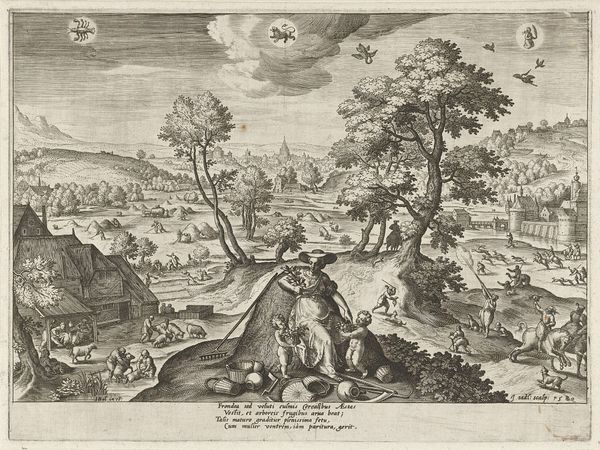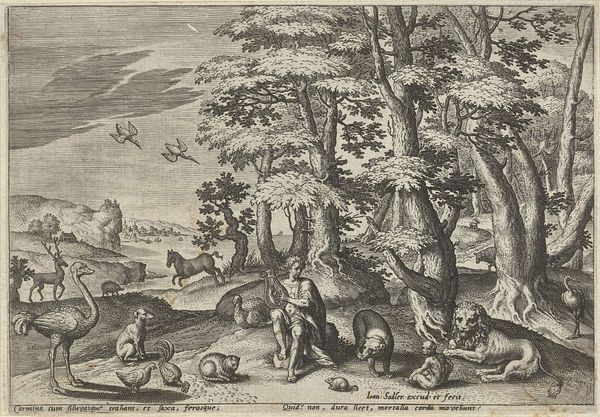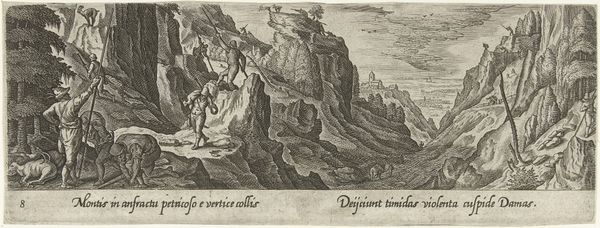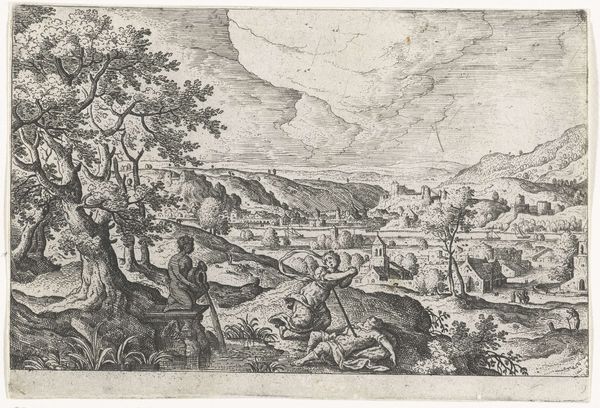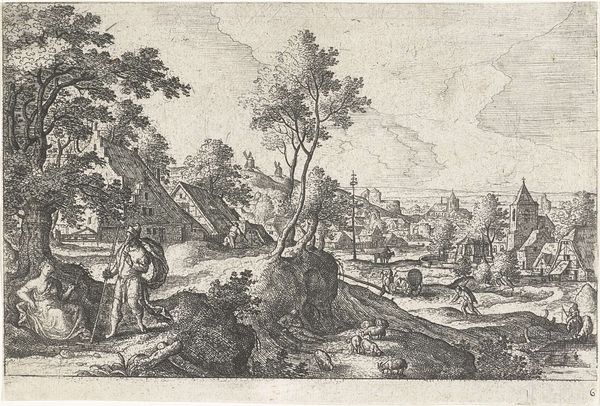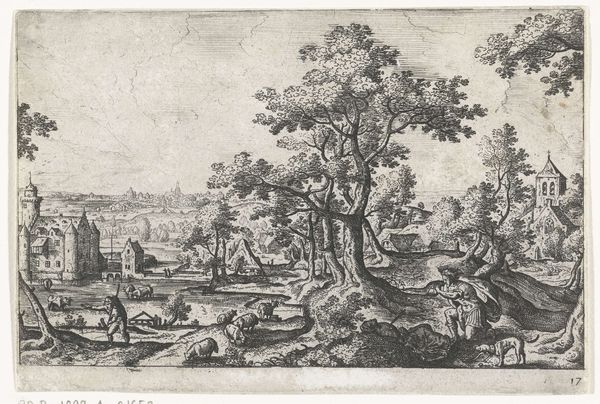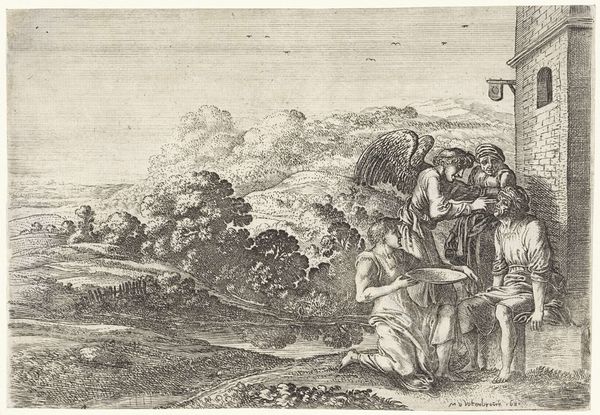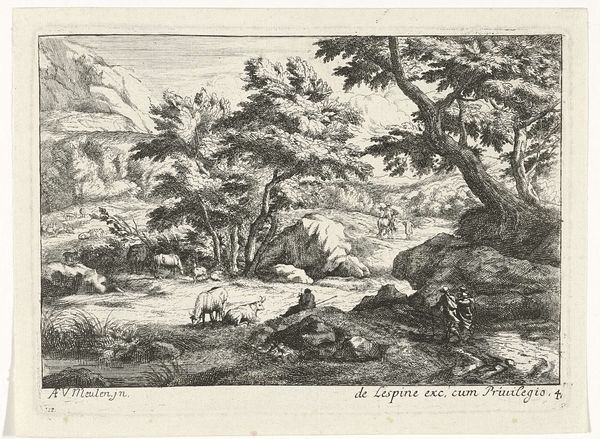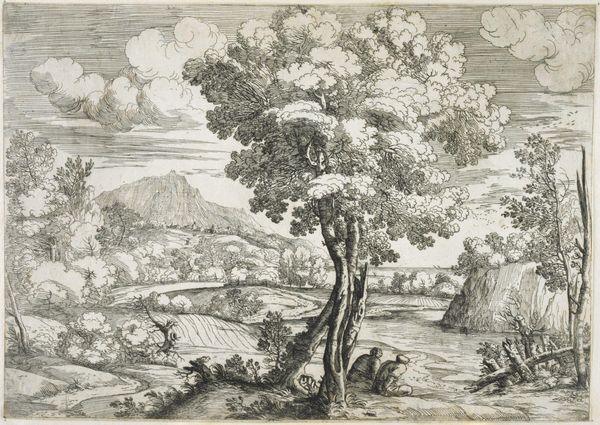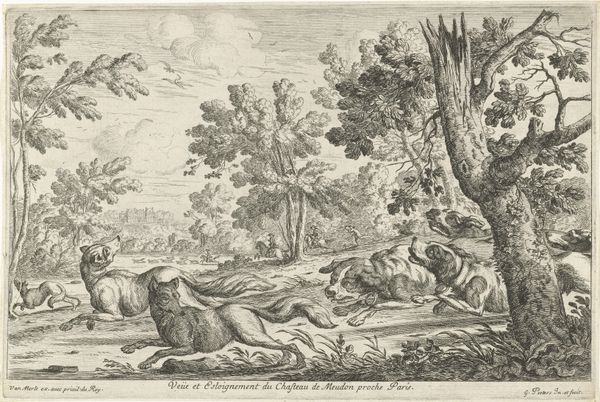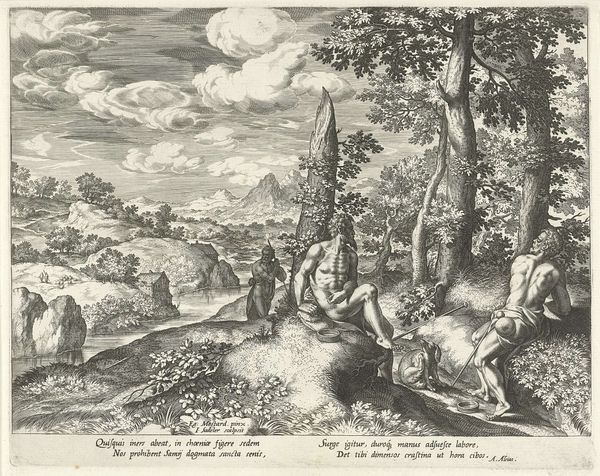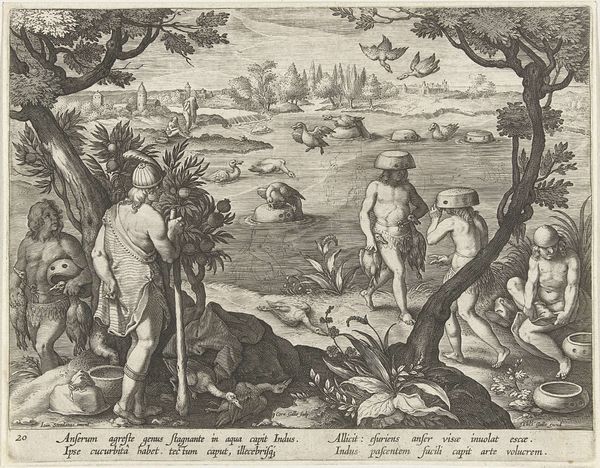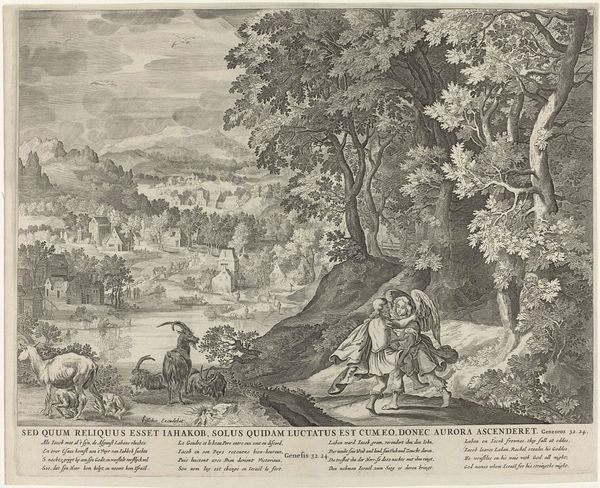
print, engraving
#
baroque
# print
#
landscape
#
genre-painting
#
history-painting
#
engraving
Dimensions: height 81 mm, width 215 mm
Copyright: Rijks Museum: Open Domain
Curator: What strikes me immediately is the sense of frenetic energy, that interplay between form and line really does conjure movement and the inherent chaos of a hunt. Editor: And indeed, it depicts a hare hunt, created sometime between 1582 and 1633 by Philips Galle. It is an engraving, a print housed here at the Rijksmuseum, so easily reproducible, able to convey a narrative far beyond the elite circles. Look at it—the act of hunting projected out, distributed. Curator: Absolutely, the dispersal is part of its inherent power. Considering the density of detail, particularly in the landscape elements, there is a compelling relationship between the foreground activity and the backdrop—the buildings, trees, even the contours of the land itself. It all feeds back into an era of land ownership, its implications for peasantry...the means of survival are really highlighted. Editor: Yes, and that distribution of light and shadow, that masterful use of chiaroscuro—the dark areas really emphasizing the hunters in action, their exertion palpable, heightening the dramatic quality. Curator: Do you see it though, the way hunting serves as a metaphor for social hierarchies and power dynamics? Galle isn’t just presenting a genre scene; this print resonates with the politics of land use, the ongoing struggle for resources and autonomy. Hunting wasn't a casual activity; it was emblematic of power—of who was permitted to take, who was forced to concede. The hares representing both literal sustenance and maybe... the people? Editor: I cannot argue the point regarding resource struggle. What the linear precision does offer—and this is what is also interesting—is how nature almost takes a primary role. This natural world is also full of semiotic expression and, dare I say it, emotion! Look at those stark angles in the upper quadrant. Curator: Galle encapsulates a key moment, in that transition of landscapes evolving and Baroque ideals solidifying. What an era, where class divides and the relationship to nature played a crucial part, really providing fertile ground for dialogue about ownership and entitlement to unfold! Editor: Indeed. Every aspect contributes to both that central design and wider contextual framework.
Comments
No comments
Be the first to comment and join the conversation on the ultimate creative platform.
